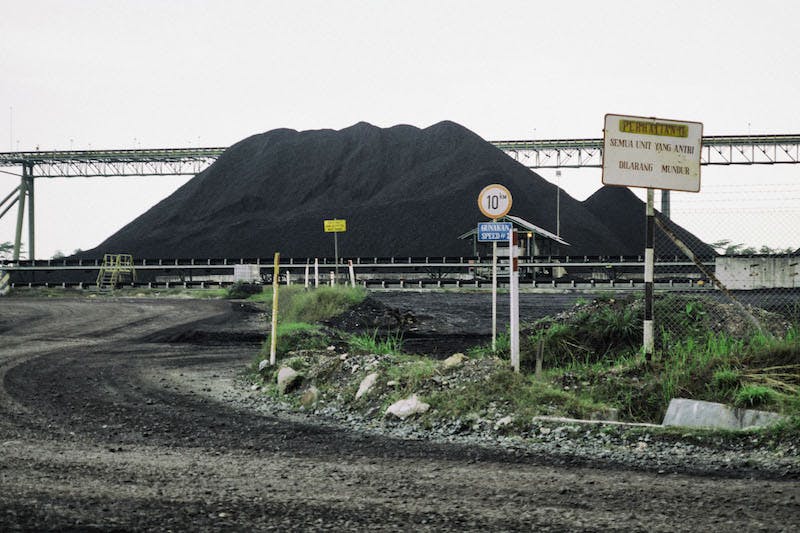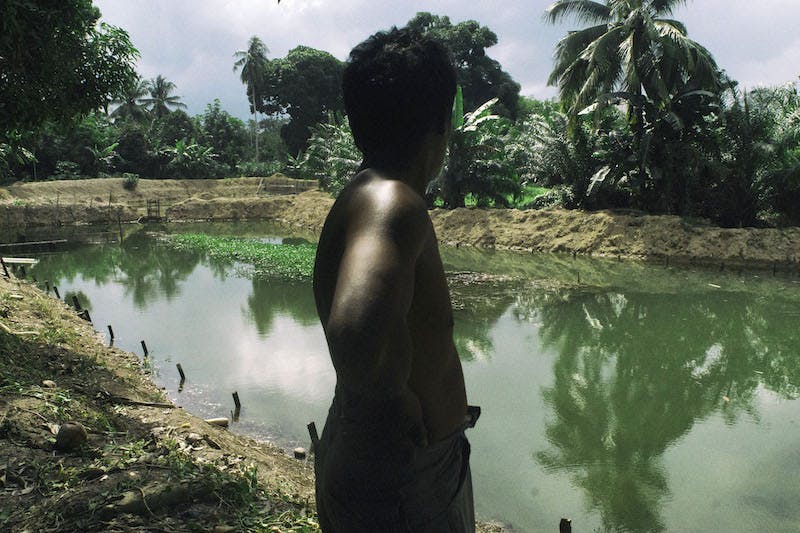“The Santan River is the lifeblood of the people of Santan Ilir, Santan Tengah and Santan Hulu villages,” said student activist Taufik Inskandar (26), sitting on the veranda of his parents’ home in Santan Ilir, in the Kutai Kartanegara district of East Kalimantan in Indonesian Borneo.
“This river has great historical value. Before there was a road, the people of Santan transported their agricultural products by river to be sold in Samarinda and Bontang,” explained Iskandar, who is a member of the local Marangkayu Student Association.
In addition to serving as a water transportation corridor, the Santan river was also used by residents to meet their everyday needs for clean water as well as to flood their fields and fishponds. Villagers “regularly hold traditional ceremonies to honor the river and the resources,” Iskandar added.
Now, Iskandar said, the people are abandoning the river because the quality of the river is deteriorating.
Ever since coal mining began in the headwaters of the Santan River, local activists say the water has become turbid, muddy, and prone to flooding when there is rain.
The water from Santan River “changes colors,” said Greenpeace Campaigner Bondan Andriyanu. “Sometimes it is brown, sometimes green, or yellow.”
“
The company closes its eyes to the deteriorating quality of the Santan River. We have found documents showing that the company planned to divert the course of the river as part of a plan to increase the production of coal.
Taufik Iskandar, student activitist, Marangkayu Student Association
Trouble below the surface
East Kalimantan hosts “incredibly rare expanse of biologically rich tropical rainforests,” according to global conservation organization The Nature Conservancy.
Much of that forest is, today, under threat. Three quarters of East Kalimantan is marked out for coal mining, according to a March 2016 report by Greenpeace Southeast Asia (pdf).
Among the largest coal operators in Kalimantan is PT Indo Tambangraya Megah Tbk (ITM), owned by Thai conglomerate Banpu. Including ports, the company has eight mining sites in East Kalimantan.
ITM subsidiary PT Indominco Mandiri operates a 25,000-hectare (~62,000-acre) mining concession in East Kalimantan. Its mines produce 9 million tons of coal a year.
It is this mining operation that activists say has rendered the water of the Santan River unusable for drinking, irrigation or aquaculture.

Indominco Mandiri coal mine operation in Santan Ilir village. Image: Ardiles Rante/Greenpeace via Mongabay.com
Paying the price for pollution
Iskandar said that people downstream of the mine now need to purify the river water with alum before it can be safely drunk. Meanwhile further upstream, where there were no mining operations, the river water still does not need to be treated.
At his home in Santan Ilir, teacher Saharuddin (who like many Indonesians uses one name) says residents now spend lots of money buying clean water from vendors who sell water from deep wells. “Last month, my school spent around 400,000 rupiah ($30) just to buy water,” he said.
Saharuddin showed several dried-up fishponds across his house. The river water can no longer be used to fill the ponds, he said. Some residents are forced to buy water to keep their fish alive. “Now, fishermen looking for fish and shrimp in the water are having a hard time getting sufficient results. People don’t want to use the river water.”
The people reliant on the river, from the villages of Santan Hulu, Santan Tengah and Santan Ilir, have all complained to PT Indominco Mandiri about their changing river.
“The company closes its eyes to the deteriorating quality of the Santan River. We have found documents showing that the company planned to divert the course of the river as part of a plan to increase the production of coal,” Iskandar said.
However, the struggle of the student association together with the residents has borne fruit, said Greenpeace’s Andriyanu said.
In a rare win against mining companies, after years of appealing to the Ministry of Forests, on Feb. 12, 2016 the permit for mining operations on local rivers were revoked.
The provincial government accepted it had “failed to protect villagers,” Greenpeace reported.
Despite this ceremonial win, activists say they have evidence that PT Indominco Mandiri continues to expand its mining operations on the Santan River. Satellite images and reports from villagers confirm this, Andriyanu said. When asked how can this be, he said: “That’s Indonesia!”
“Coal mining companies have the ear of local government,” Andriyanu said. “So many people are targeted by corruption in relation to coal mining. They are in good positions in the provincial government.”

A farmer named Azis stands near his small fish pond, polluted by coal dust and chemicals in Santan Ilir village. Image: Ardiles Rante/Greenpeace via Mongabay.com
Defending the river
PT Indominco Mandiri did not respond to requests for comments from Mongabay. According to Greenpeace, the company has told local residents the changes in the river are due to “algae,” not expanded mining operations, but has blocked people from going upstream to investigate.
Greenpeace plans to carry out soil and water testing and species counting in the affected areas, Andriyanu said. However, the organization needs to be careful not to cause trouble for local residents.
Iskandar says his members of the student association have been told to cease opposition, have been forcibly moved from peaceful demonstrations and have received direct threats from PT Indominco Mandiri, as well as threats via text messages.
Despite the challenges, Iskandar said villagers cannot afford to stand by and let their river become even more polluted. “People will automatically lose their livelihoods – which is largely agricultural or from fishing and plantations that are dependent on the Santan River,” he said.
“We are miserable now,” Saharuddin said. “There is no longer any clean water.”
Additional reporting by Lucy EJ Woods.
Editor’s Note: A reporter from Mongabay-Indonesia visited the Santan River area in August 2016 and a version of this story was first published on Mongabay’s Indonesian sister site on Sept. 8, 2016. Follow-up interviews were conducted remotely in March 2017.
This story was published with permission from Mongabay.com










